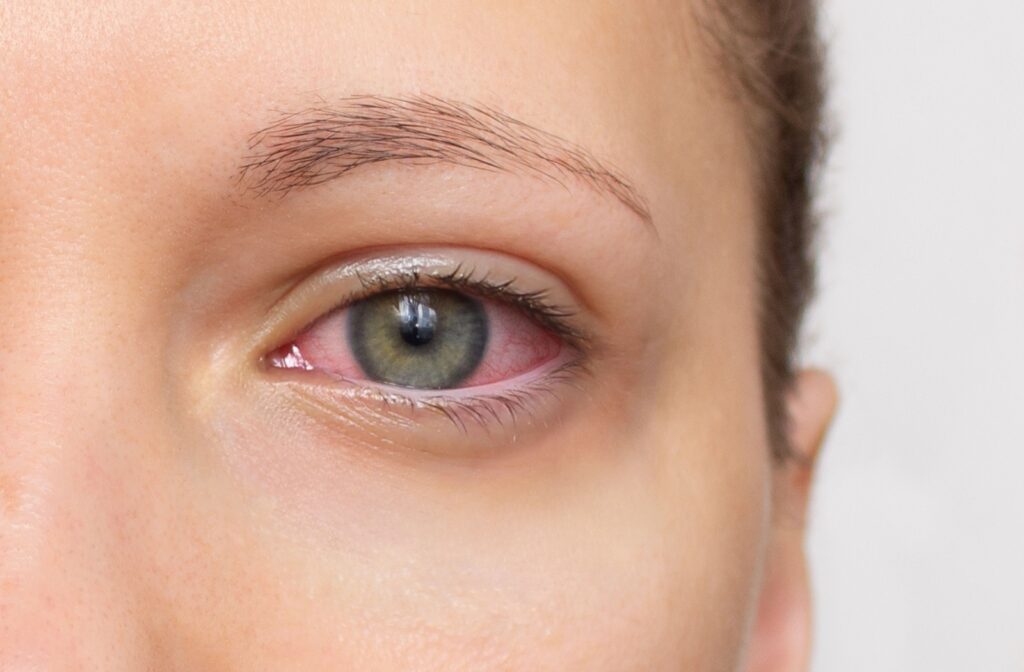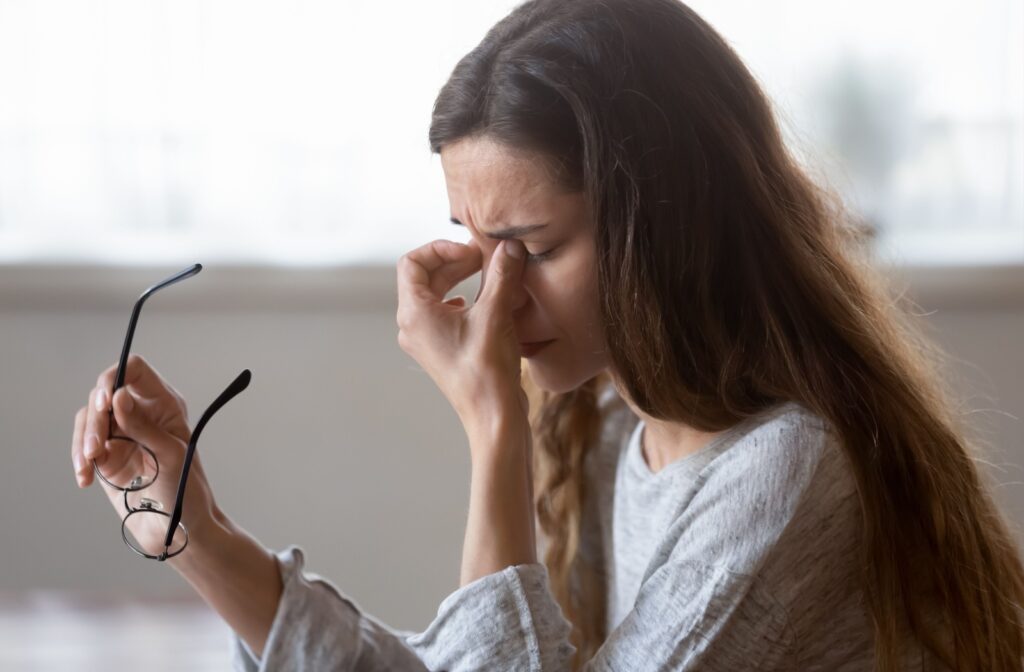If you’ve ever felt a gritty, stinging, or burning sensation in your eyes and noticed your vision getting hazy, dry eye may be the root of the problem. Dry eyes can absolutely cause blurriness, especially if your tear film is unstable or of poor quality. Though often overlooked, dry eye is more than just an annoyance—it can have a major impact on how clearly you see each day.
Understanding the link between dry eyes and vision clarity is key to managing symptoms and finding relief. From how your tear film functions to what professional treatments can restore balance, here’s everything you should know.
What Is Dry Eye?
Dry eye occurs when your eyes don’t produce enough tears or when the tears evaporate too quickly. Healthy tears have 3 essential layers (oil, water, and mucous), all working together to hydrate the eye and maintain a smooth optical surface. Without this balance, the tear film becomes unstable, and your vision can blur.
There are 2 main types of dry eye disease:
- Aqueous Deficient Dry Eye (ADDE): Your eyes don’t produce enough watery tears.
- Evaporative Dry Eye (EDE): Your tears evaporate too quickly, usually due to oil deficiency from meibomian gland dysfunction (MGD).
Both types can result in blurred vision, eye fatigue, and long-term discomfort—especially if left untreated.
How Does Dry Eye Cause Blurry Vision?
Your tear film is the first surface that light hits when entering your eye. If this surface isn’t smooth and uniform due to dryness or tear instability, light is scattered rather than focused. The result? Blurry, fluctuating vision—even when your prescription is perfectly fine.
In addition to blurred sight, dry eye may also present with:
- Redness or irritation
- A sandy or gritty feeling
- Stinging or burning
- Sensitivity to light
- Watery eyes (a reflex response to dryness)
- Trouble wearing contact lenses
These symptoms often worsen in environments with dry air, wind, or extended screen use.
Meibomian Gland Dysfunction (MGD): A Common Culprit
The meibomian glands in your eyelids produce the oils that help prevent tear evaporation. When these glands become blocked, inflamed, or stop functioning properly, you’re more likely to develop evaporative dry eye—the most common form of dry eye. Without enough oil in your tears, the watery layer evaporates quickly, leaving your eyes dry and your vision blurred.
Chronic MGD can even damage the eye’s surface over time, which is why early diagnosis and proactive treatment are crucial.
What Causes Dry Eye?
Dry eye can stem from various lifestyle, environmental, or medical factors. Some common causes include:
- Aging: Tear production tends to decline with age
- Medications: Antihistamines, antidepressants, and hormone therapies can reduce tear volume
- Health conditions: Autoimmune disorders and diabetes may contribute to dry eye
- Environmental exposure: Smoke, wind, and dry indoor heating
- Screen time: Reduced blinking during digital use
- Contact lens wear: Can affect tear film stability

In-Office Dry Eye Treatments
If your dry eye symptoms are causing vision issues, professional treatments can restore balance and clarity. Today’s most effective options go beyond eye drops and offer lasting relief by targeting the source of the problem.
Intense Pulsed Light (IPL) Therapy
This light-based therapy targets inflammation and stimulates meibomian gland function. It’s noninvasive, eye-drop-free, and ideal for those with chronic MGD or skin-related inflammation around the eyes.
LipiFlow & LipiScan
LipiFlow uses heat and massage to clear gland blockages and restore the natural flow of oil to your tear film. LipiScan imaging helps map gland health and guides treatment planning.
Radiofrequency (RF) Therapy
RF treatment uses gentle thermal energy to unclog glands and stimulate collagen production, enhancing tear film stability and reducing eyelid inflammation.
Low-Level Light Therapy (LLLT)
LLLT is a drug-free, noninvasive solution that uses red and near-infrared light to promote gland activity and increase tear production.
Additional Management Options
Beyond in-office care, your optometrist may also recommend:
- Artificial tears or prescription eye drops
- Omega-3 supplements for improved tear quality
- Warm compresses and lid hygiene routines
- Specialty contact lenses designed to lock in moisture
- Drop therapy tailored to your eye’s needs
- Dry eye imaging and diagnostic tests to assess dry eye severity
Your treatment plan should reflect your lifestyle, severity of symptoms, and the root causes of your symptoms.
Can You Prevent Dry-Eye-Related Blurriness?
While not always preventable, dry eye symptoms—including blurriness—can often be reduced by:
- Staying hydrated
- Using a humidifier indoors
- Blinking fully during screen time
- Wearing sunglasses in windy or bright conditions
- Following your eye care provider’s recommended maintenance routine
Experience Dry Eye Relief in South Surrey & Kelowna
If dry eyes are disrupting your vision and comfort, you deserve clear answers and effective treatment. At Eyestyle Eyecare in South Surrey and Kelowna, we offer comprehensive dry eye exams to diagnose dry eye. While the condition itself is rarely serious on its own, it can lead to long-term infections and eye damage down the road.
Anytime your eyes are uncomfortable, it’s best to pay us a visit and rule out more worrisome conditions. Let us help you bring your vision back into focus—book your eye exam today!



